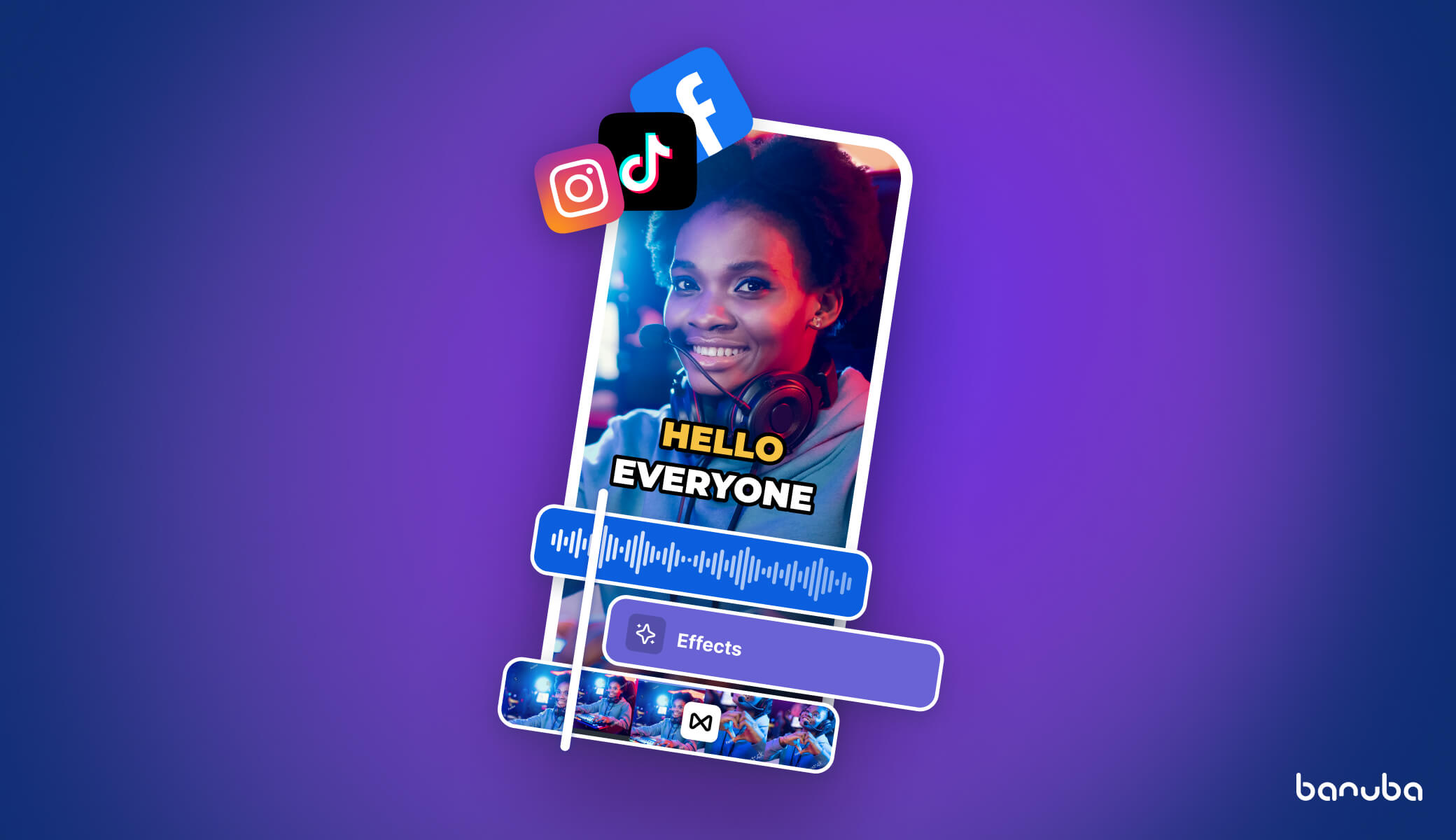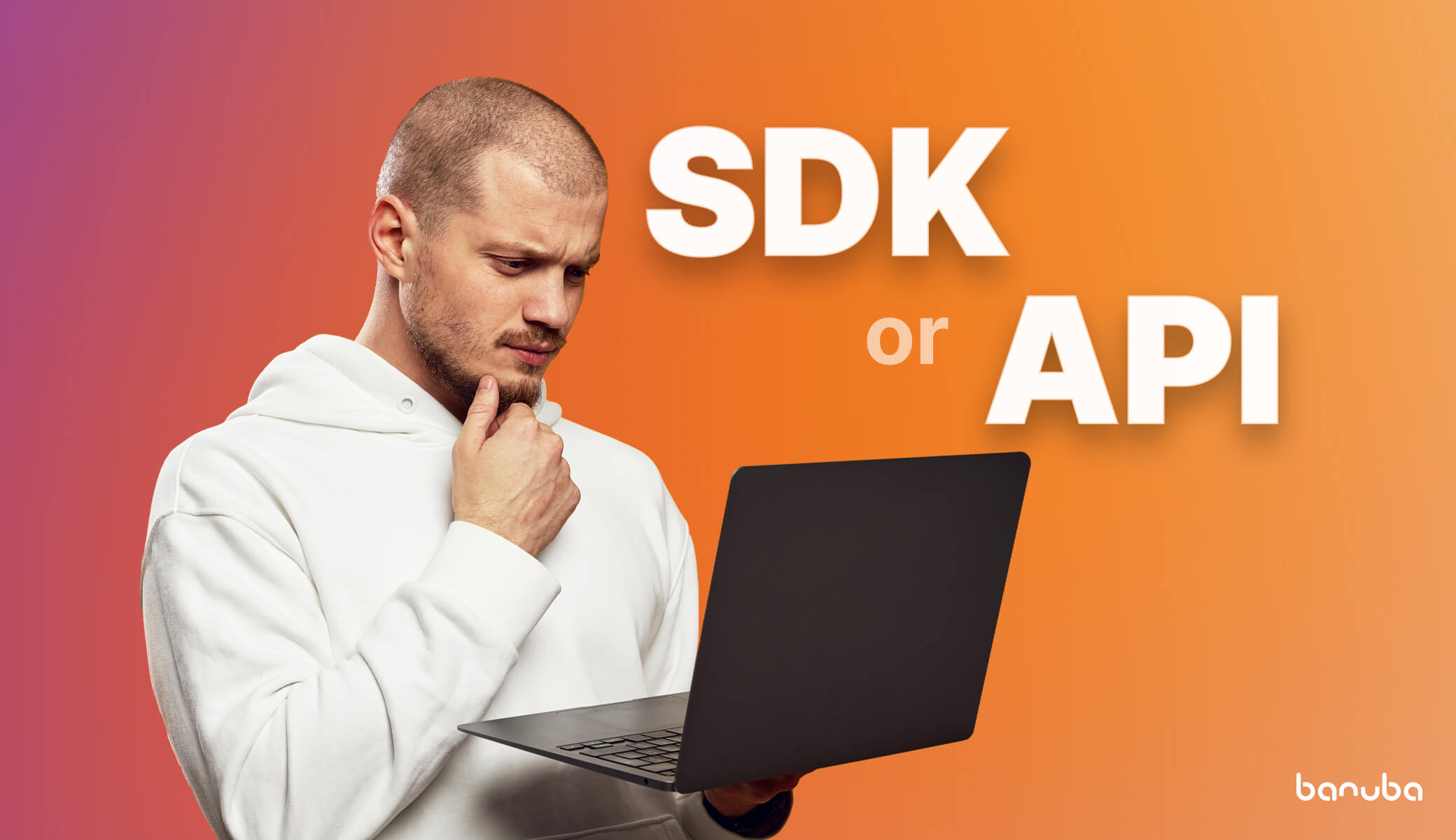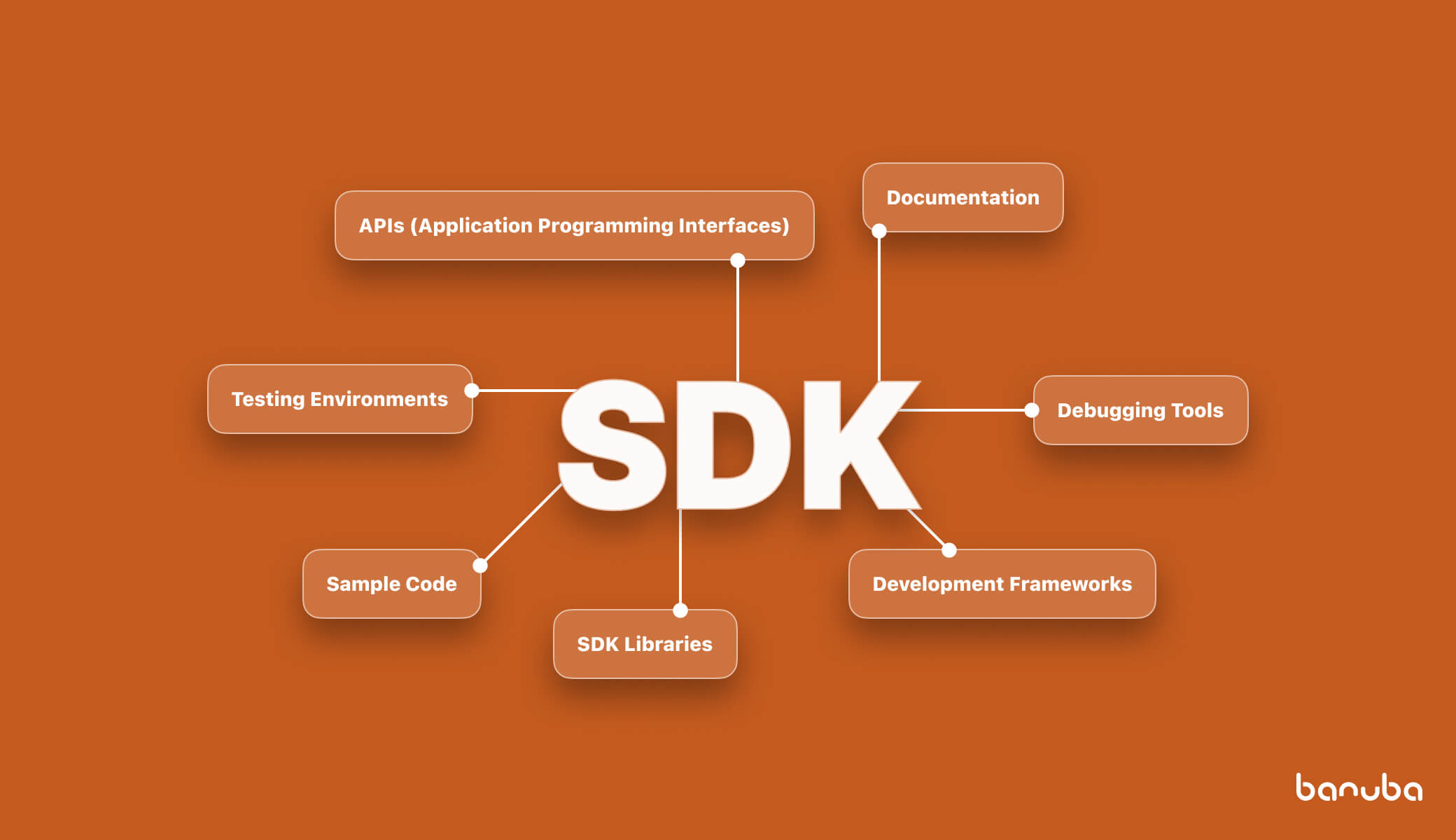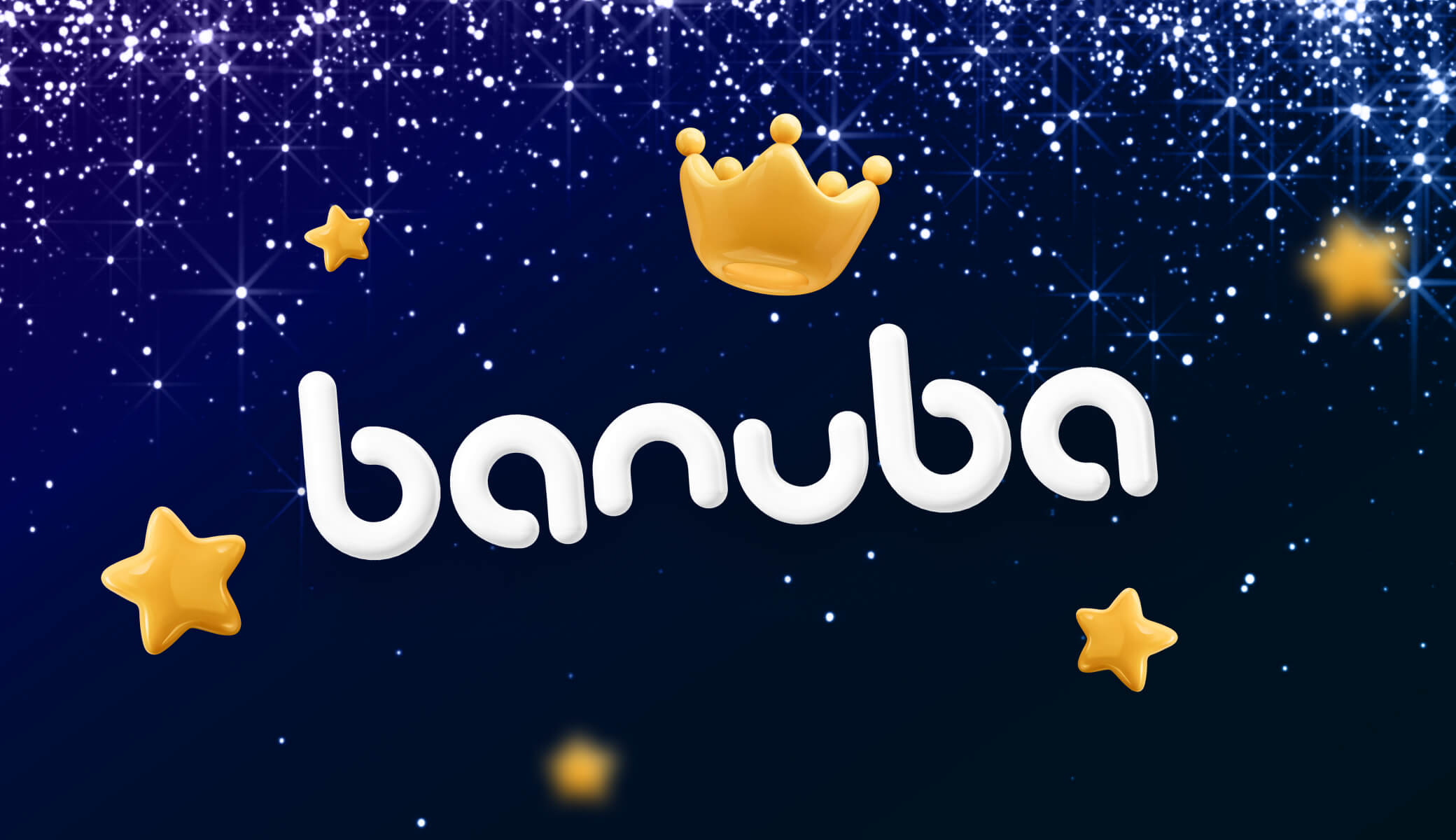[navigation]
TL;DR
- How to create a social media platform? Start from learning about the market, figuring out your target audience, scope of the initial release, and monetization model.
- The next step is to gather (or hire) a development team, select the fitting technology, and get to work.
- Using software development kits (e.g. Banuba Video Editor SDK) can save up to 50% of development time.
- Once your platform is ready to go, promote it through influencers, content marketing, targeted ads, and public relations to attract users.
Understanding the landscape
In 2024, the social media industry has continued to evolve, with a diverse range of platforms catering to various forms of content and communication. General social media platforms like Facebook and Twitter remain popular for sharing text-based updates, articles, and links. Their photo-focused counterparts such as Instagram and Pinterest have solidified their positions as go-to spaces for visually oriented content. However, video-sharing platforms like TikTok and YouTube continue to dominate the digital landscape, with competitors emulating their features (e.g. Instagram adding the Reels feature).
Video-centric social media have gained prominence due to their ability to drive increased engagement and offer better brand storytelling opportunities. The visual nature of content allows for more impactful storytelling, enabling brands to convey their messages in a compelling and memorable manner. Additionally, video often leads to higher levels of engagement, as it is inherently more immersive and captivating than text or static images. For example, 92% of videos watched on mobile devices are shared – far more than any other type of content.
Video-focused platforms are also popular with businesses looking to promote their products. According to Wyzowl, 90% of companies include videos in their marketing strategies. And Hubspot reports that short-form audiovisual content is the most cost-efficient tool in the marketers’ arsenal.

Building Your Foundation: Core Steps for Platform Development
Social media app development starts with research and planning. Here is what you need to consider first.
Vision
There have always been a place for new social media on the market, despite the apparent dominance of TikTok, Facebook, Instagram, and other megacorporations. Other, specialized platforms have been doing great if they fit their niche. For example, Press Sports focused on athletes, coaches, teams, and colleges. As a result, it gained popularity among its target audience and investors.
On the other hand, Chingari seized the opportunity when TikTok got banned in India, and quickly became one of the most prominent social media platforms in its market.
So is creating a social media platform hard? Yes. Competing with the megacorporations isn't easy, but if you have a clear vision, you might not have to do it.
Scope
This point is twofold.
Firstly, it is about choosing the platforms to release on. The most common are Android, iOS, and Web. You can go for all three at once, or start with one and expand to the rest later. Both approaches have their advantages and disadvantages.
Release everywhere:
Pros
- Maximum potential target audience: almost everyone who owns a device with Internet access.
- Better brand visibility: presence on all platforms helps in getting noticed by more people.
- More user insights. People on different devices interact with each other and with the content in different ways. Gathering this information could help you find new ways to improve your product.
Cons
- Increased development time and cost. More apps means more time and effort are needed to build them.
- Potentially inconsistent user experience. Some functionalities are easier to implement on certain platforms. This means that, for example, your web and mobile apps end up having a different feature set.
- Hard to update all platforms simultaneously. This ties in with the previous points. The same functionality could take different time to develop, forcing you to either delay the update or stagger it.
 House of Rock - a social media and travel app
House of Rock - a social media and travel app
Release on one platform:
Pros
- Lower initial cost. One app is less expensive than three.
- Shorter time-to-market. Focusing on one platform means fewer integration issues and easier social media app development process.
- Simple updates. Only one platform to support and one marketplace (if any) to deal with.
- Consistent user experience. Everyone gets the same UI and feature set.
Cons
- Limited audience reach. Choosing only Android, for example, will cut off all the iPhone users.
- Less flexibility. You will have fewer opportunities to research user behavior and gain audience insights.
The second part is choosing which features to offer from the start, in your minimum viable product (MVP). The general idea is to include the functionalities that fulfill your users’ needs and help your product stand out from the competition. In practice, the prioritization can take different forms, e.g. assigning points to each, placing them on an impact/effort quadrant, etc. You won’t be able to include absolutely everything, so choosing the most fitting features is paramount.

Monetization
How to make a social media app… that makes profit? There are many options that the currently popular platforms use:
- Advertising. Running targeted ads on your platform is the most straightforward way to monetize your users.
- Subscriptions. Selling access to premium options or special features (like verification on X) is a way to make money from social media.
- Portion of the donations. TikTok allows users to reward streamers with digital gifts from the social network’s store. The creators can convert these gifts back into real money, but the platform takes a small cut of the donations.
- Live commerce. Integrating product detection and a payment processing system lets you attract merchants that would benefit from your audience in exchange for a cut of the profits.
- Data monetization. Selling anonymized user data to interested parties (e.g. for market research) is a popular monetization option. However, the gathering policy should be ethical and compliant with regulations like GDPR.
Building Your App & Website
Now let’s move on to how to build a social media platform from a technical perspective.
Team
You need to choose the people who will create your project.
If you have an in-house team, they likely know how to create a social media platform, at least in general. In this case, consult with them.
Otherwise, you either need to assemble one or hire a software development company. Qualified engineers, designers, and managers can command high salaries, so an in-house team requires a large budget. Dedicated companies, on the other hand often have offshore development centers in countries with lower cost of living, so this is often a more cost-effective option.
Technology
Once you know what you want to release and where, you can choose the tools to develop it with. You can consult with your team for this issue as well. Note, however that some software development companies specialize in certain languages and frameworks, and may nudge you towards using them regardless of whether it is the right choice.
In general, this is mostly a matter of whether use native or cross-platform mobile frameworks and whether to integrate SDKs to speed up development.
Native vs Cross-platform
Native technologies are those supported by the owners of a specific platform. They are Java and Kotlin for Android, and C# and Swift for iOS.
Pros:
- Highest performance
- Easy access to platform-specific features (AR, biometrics, etc.)
- Higher stability
Cons:
- More expensive (requires a separate app for each platform)
- Longer development time
- Two teams needed. Alternatively, you will have to find developers who know both platforms, which means still higher costs.
Cross-platform frameworks allow developers to create a single app that would run on both Android and iOS with minimal changes. The most prominent ones include React Native and Flutter, though there are other examples.
Pros:
- Shorter development time
- Code sharing with web (in the case of React Native)
- Easier maintenance
Cons:
- Somewhat lower performance
- Limited access to platform-specific features
- Need to write some platform-specific code for each version

SDKs
SDK (software development kit) is a ready-made module that you can quickly integrate with your project to get certain features. For example, Banuba Video Editor SDK is a full-fledged audiovisual content creation suite that usually takes under an hour to install. And it includes:
- Video recording
- Trimming/merging
- Transition effects
- 3D masks
- Background changer
- Rapid/slo-mo
- Picture-in-picture
- Color filters
- Music provider integration
- AI clipping
- Etc.
Developing all of this from scratch would’ve taken over 100.000 man-hours and hundreds of thousands of dollars. Integrating it potentially saves up to 50% of development time.
Video Editor SDK is compatible with both native and cross-platform technologies, which means you can benefit from it no matter what you choose for your social network.
Integration
The first step is to request the SDK archive and the trial token. This way you’ll be able to test this product for 14 days, no credit card required. Simply send us a message through a contact form below.

The second step is to merge the SDK with your project. It is distributed as CocoaPods or Maven packages (depending on the platform) to speed up integration. See the detailed updated instructions below (links to GitHub):
How to create a social media platform for free?
If you don't want to spend any money on building a social network, you can do this... kind of. There are free themes for popular content management systems (CMS') like WordPress and no-code app builders that let even people who don't have any technical skills. Often they have complementary services like a domain name and hosting, which is very convenient.
However, there are many problems with such an approach.
1. Limited customization. Such tools contain standard building blocks that you can put together to form a complete app. And if you want something unusual, you'll have to either pay the platform for custom development or wait until the feature is released for everyone (if it ever happens).
2. Low scalability. Free platforms only support a limited number of concurrent users. If many people use your social network at the same time, it will slow down or crash. Themes for websites don't have this limitation, but you will still need to pay for hosting and bandwidth.
3. Dependency on the provider. Any updates or bugfixes can only be done by the vendor. If the company that hosts your entire platform goes out of business, your platform is irrevocably deleted. If it's hacked, your data is under threat as well.
4. No extra integrations. If you need third-party services (payment gateway, music provider, etc.), you can only use those that are supported by your vendor.
5. No uniqueness. While the constructors provide some customizability, your social media platform will look and feel the same as every other built in the same system. They are "one-size-fits-all" by necessity.
6. Paywalled features. Many ostensibly free options have cool or important features only accessible to paying customers.
While using free tools is fine for small projects, they are not suited for platforms that expect to attract thousands of users. Or they end up being paid and even more expensive than other commercial tools.
Launch & Beyond: Growing Your Community
Now let’s move from “how to start a social media platform” to how to make it actually social. Attracting people to your community requires effort, as they have limitless other ways to spend their time. Some of the more popular options include:
- Influencer marketing. Contract the people who have clout among your target audience to promote your platform.
- Search engine optimization. Using both on-page and off-page tactics, you can improve your platform’s ranking on Google, Bing, etc. This will help attract people looking for what you are offering.
- Content marketing. Create blog posts, infographics, videos, and other content that would be interesting to people in your community. Then make sure it reaches them (e.g. through SEO optimization).
- Referral program. Incentivize current users to invite their friends to join the social network through a referral program. Offering rewards or exclusive access can encourage existing users to spread the word.
- Targeted ads. Advertising on other social networks and search engines can help attract the perfect users for your app.
- Public Relations. Generate buzz through press releases, media outreach, and partnerships with relevant industry publications or blogs. Securing coverage in the media can help increase visibility and credibility for your social network.
Note that to keep up with the competition, you need regular updates to your platform’s functionality. In addition, monitoring the user activity and dealing with bad actors is essential to keep up your platform’s health.
Conclusion
Now you have all the information you need to develop a social media platform. Start with getting a clear vision for it, so you can find the right niche and avoid the harshest competition. Decide on whether to release on mobile devices and in browsers simultaneously, or start with one platform and expand later. Then figure out the most important features to go into your MVP so that you can both impress the users and distinguish yourself from similar apps. Pick a team to develop your project and select the right technologies.
Using Video Editor SDK is a smart move, as it could save up to 50% of development time. And getting it is simple – send a message through a contact form below.






 House of Rock - a social media and travel app
House of Rock - a social media and travel app



